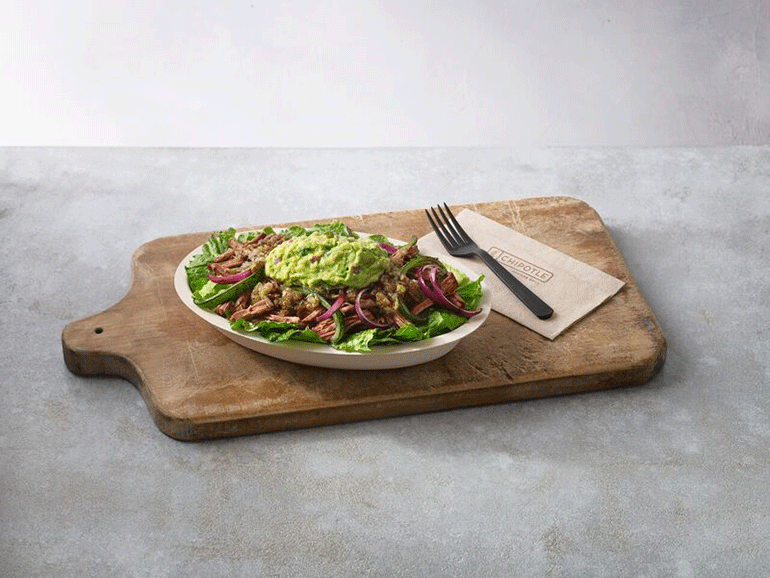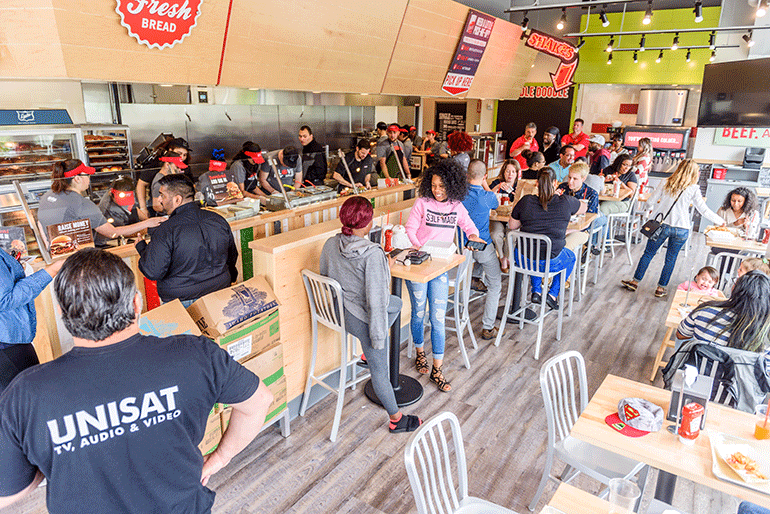To achieve their health goals, consumers are turning to the Internet to find their “tribes,” and that input from like-minded strangers is having a growing influence on eating behaviors, according to research from The NPD Group.
For restaurants, these tight-knit communities present both opportunities and challenges.
“What we continue to see is consumers going down the tribal path,” Darren Seifer, executive director, food and beverage industry analyst at The NPD Group. “It’s become increasingly difficult to be a mass marketer.”
Restaurant chains are taking notice, with some of the largest chains recently tailoring menus and marketing to appeal to consumers who identify with popular health plans. Chipotle earlier this year introduced Lifestyle Bowls tailored to popular diet plans like keto, paleo and Whole30 to remove the guesswork for customers adhering to those plans. And this spring Dunkin’ Donuts added egg-white bowls that fit squarely into the low-carb, high-protein meals of many popular diet plans.

This new tribalism around health and wellness was spurred by the 2008 recession, NPD found. Younger consumers pulled back from eating at restaurants between 2008 and 2015, and increasingly turned to the Internet to find healthful lifestyles that fit their values.
According to NPD data, 18- to 34-year-olds made 223 restaurants visits per person in 2008, and as few as 216 in 2013. That number has since rebounded, to 224 visits per person among 18- to 34-year-olds for the year ended December 2018.
But the influence of Internet communities on eating behaviors remains.
Nearly 60 percent of consumers who engage in clean eating, research their foods online, NPD found. Additionally, consumers engaged in the lifestyles like paleo, Whole30, and plant-based eating often find like-minded consumers online.
Still, targeting these consumers requires a balancing act, as a relatively small portion of restaurant visits, or about 10%, are driven by health needs, NPD found.
According to NPD research, consumers say about 20% of meals are motivated by health or nutrition, but just as many are motivated by the need to satisfy a craving or taste or serve as a treat or reward.
“It’s not all health, all the time,” Seifer said.
Among the operators catering to today’s health communities are Plano, Texas-based Mooyah Burgers, Fries and Shakes and Chicago, Ill.-based Wow Bao. Here’s a look at how they do it.
Mooyah: Something for everyone

On April 1, Mooyah launched a line of five Lifestyle Burgers, including Gluten-Free, Paleo, Keto and Vegetarian options to appeal to their customers’ evolving dietary needs.
To create the new line, Mooyah tapped its existing customizable menu of over 26 toppings and sauces, four proteins and three different buns.
“We are really fortunate because we have a customizable menu,” said Natalie Anderson-Liu, Mooyah’s vice president of brand. “We used exactly what we have to come up with compelling recipes.”
While the Paleo, a half-pound Angus Beef, Applewood smoked bacon, avocado, tomato, pickles, onions and mustard between Iceberg lettuce leaves, is the current bestseller, the entire line is performing well. For example, Anderson-Liu said that from April 1 to May 15 the Lifestyle Burgers generated 52-percent higher visit frequency from guests than other products.
The new line may be driving visit frequency and generating increased revenue, but the ultimate goal, said Anderson-Liu, is to communicate to customers that “there is no occasion when our restaurant cannot fit your needs.”
Wow Bao: Going gluten-free
Wow Bao, which specializes in hot Asian buns, is focusing just one, albeit broad, group: consumers who avoid gluten.
Following two years of recipe testing, Wow Bao on May 1 launched the Gluten-free Chicken Teriyaki Bao at all of its Chicago-area locations.
“We realized a large population was missing out on trying our signature item, the bao, because they are avoiding gluten because of Celiac, gluten intolerance, or avoiding gluten for other reasons,” said Geoff Alexander, Wow Bao’s president. “As we continue to expand our concept, we want our menu to be accessible to as many guests as possible.”
The new gluten-free bao bun is made with tapioca and rice flour and filled with chicken teriyaki prepared with tamari in place of soy sauce. It is sold in packs of two for $6.29, about $2 more than a non-gluten-free bao two-pack. To inspire trial, the chain said it plans to reduce the price of the new item to $5.79.
Wow Bao has no immediate plans to target any other dietary needs at this time, Alexander said. However, he said the chain would continue to promote steaming as a healthier cooking method, and its low-carb and vegetable bases for its bowls, such as lettuce cups, cauliflower rice, and zoodles, which are scheduled to launch next month.

